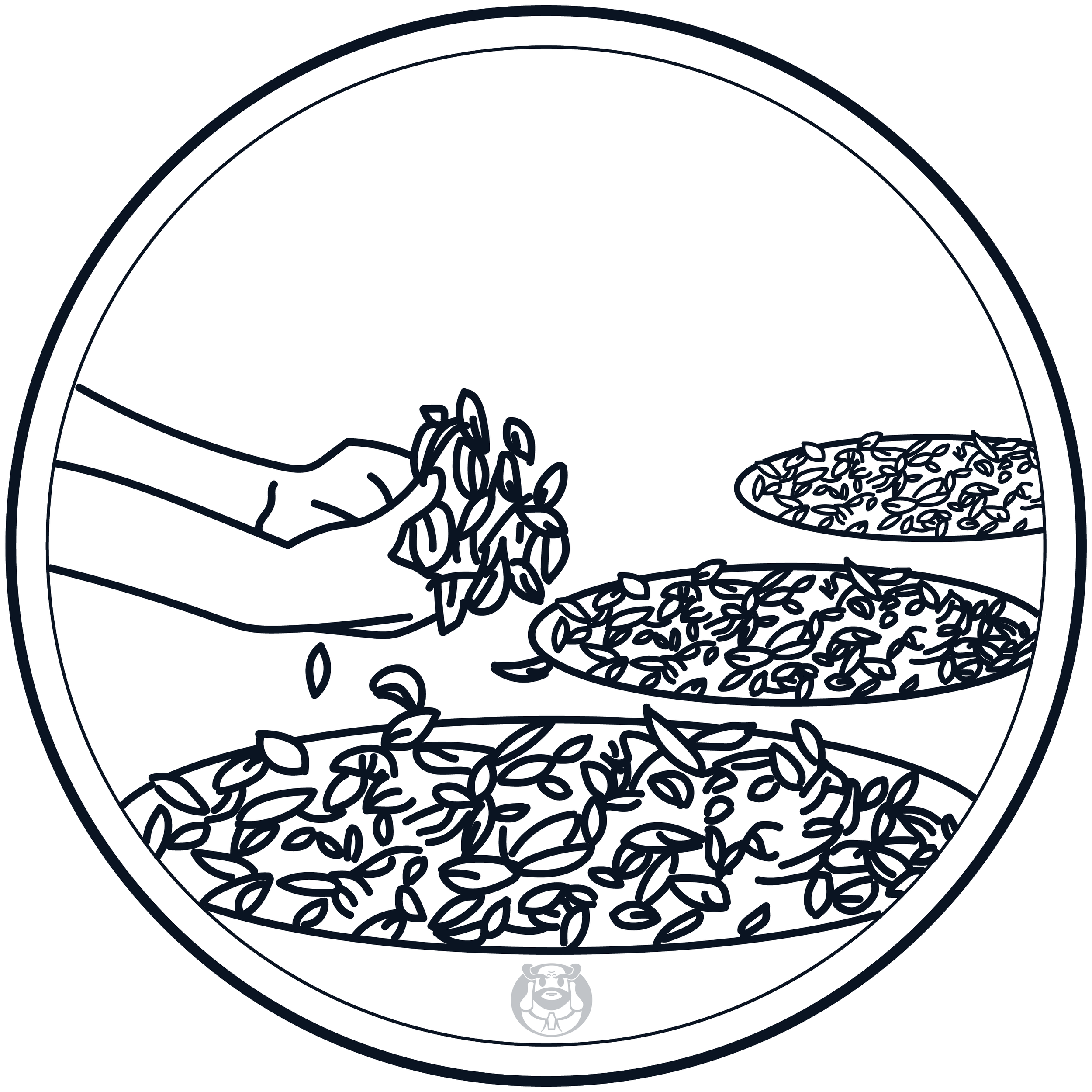Tea Farm: The Process of Making Tea
Harvesting
Tea is made from the leaves grown on tea plants. Farmers usually pick apical buds with 1 - 3 leaves depending on the flavor they want to make for the next process. The completeness of the leaf will affect the quality of the tea.
The younger of the leaves, the higher of the caffeine ratio.
Different tree species also have different caffeine ratios.
Withering
Farmers will set the leaves on bamboo trays and leave it outdoor under the sun. The leaves will start to lose water and become soft. After the leaves turn dark green, the trays will be moved indoors. Farmers will also repeatedly perform the action of etting and tossing throughout the withering process.
Etting: allowing the water to get from the center to the edge of the leaves.
Tossing: preventing water to accumulate in parts of the leave as well as increasing the oxidation inside the leaves.
Fermentation
The fermentation process relies purely on the enzyme inside the tea leaves. There are different enzymes in the leaves and the rotation of etting and tossing will help the function of enzymatic oxidation.
(Fermentation happens along with withering)
The color and smell will change depending on the level of fermentation
Fixation
High temperature are used to kill the enzyme activity and stop the fermentation process. While fixation happens, the aroma of the tea slowly develops. The stalks and veins of the tea will become soft and slightly sticky. The water in the leaves will also start to gradually evaporate; therefore, the leaves will not break easily.
Depending on the type of tea the farmer is making, certain tea skips the withering and fermentation process and goes directly to fixation while some tea does not need the fixation process at all.
Rolling
The tea leaves with stems are curled and tightened after being kneaded. With the pressure of rolling, the juice inside the leaves will seep out and stick to the outer rim. Therefore, the natural juices of the tea can quickly dissolve in hot water and become a cup of flavorful tea.
When Kneading, the strength should be consistent.
Too strong: the tea leaves will be broken and be damaged.
Too light: the tea leaves will not be curled and tightened.
Drying
In order to fully stop the fermentation and shrink the volume of the tea leaves, farmers will use a dryer to kill the leftover enzymes and lower the water content to less than 5%. Farmers will dry the tea leaves twice to make sure the leaves are dried throughly.
Refining
The first step of refining is called screening, which classifies leaves according to the size of the formed tea leaves. Then a cutting machine is used to cut the tea leaves which are too thick into the desired size. The farmer will throw away the tea stems and the rest of the tea leaves are processed with a shaping machine. Finally, a wing blowing machine is used to remove the residues.
Screening > Cutting > De-Stemming > Shaping > Winnowing > Re-Drying
Roasting
Each type of tea needs different levels of heat roasting. Farmers will put the tea leaves in the roaster machine and make the tea leaves emit a delicate fragrance.
Scenting
For the tea leaves to become a flowery tea, farmers will add flowers and scent. The tea then goes through the drying process to complete the scenting operation.
Packing
Generally, there are barrels of tea in the tea shop waiting for customers to choose. After selecting the tea they want, farmers will measure the amount and pack the tea. There are various ways of packing the tea. However, for the tea to last longer periods of time, most of the farmers will use the vacuum packaging method.










